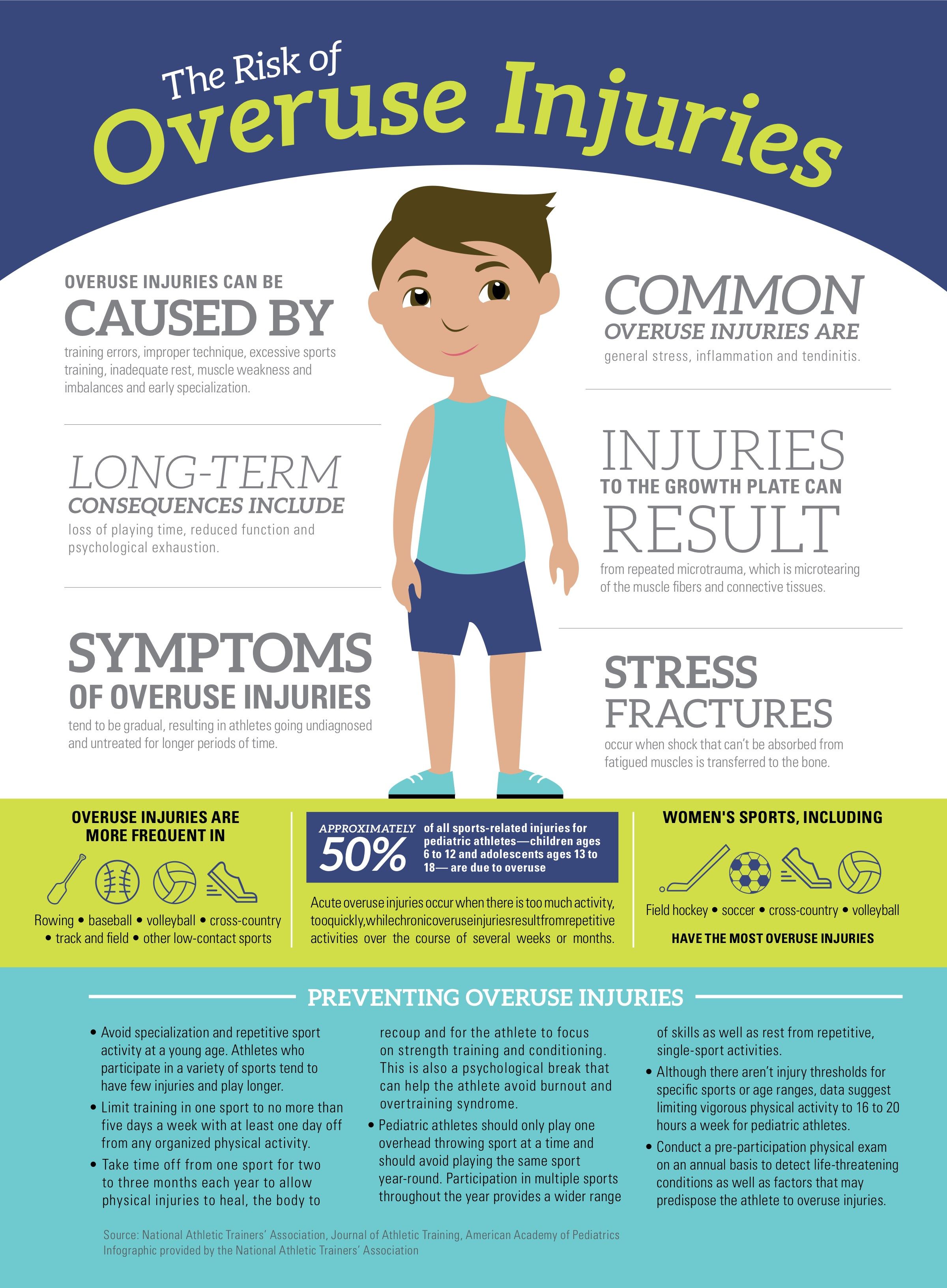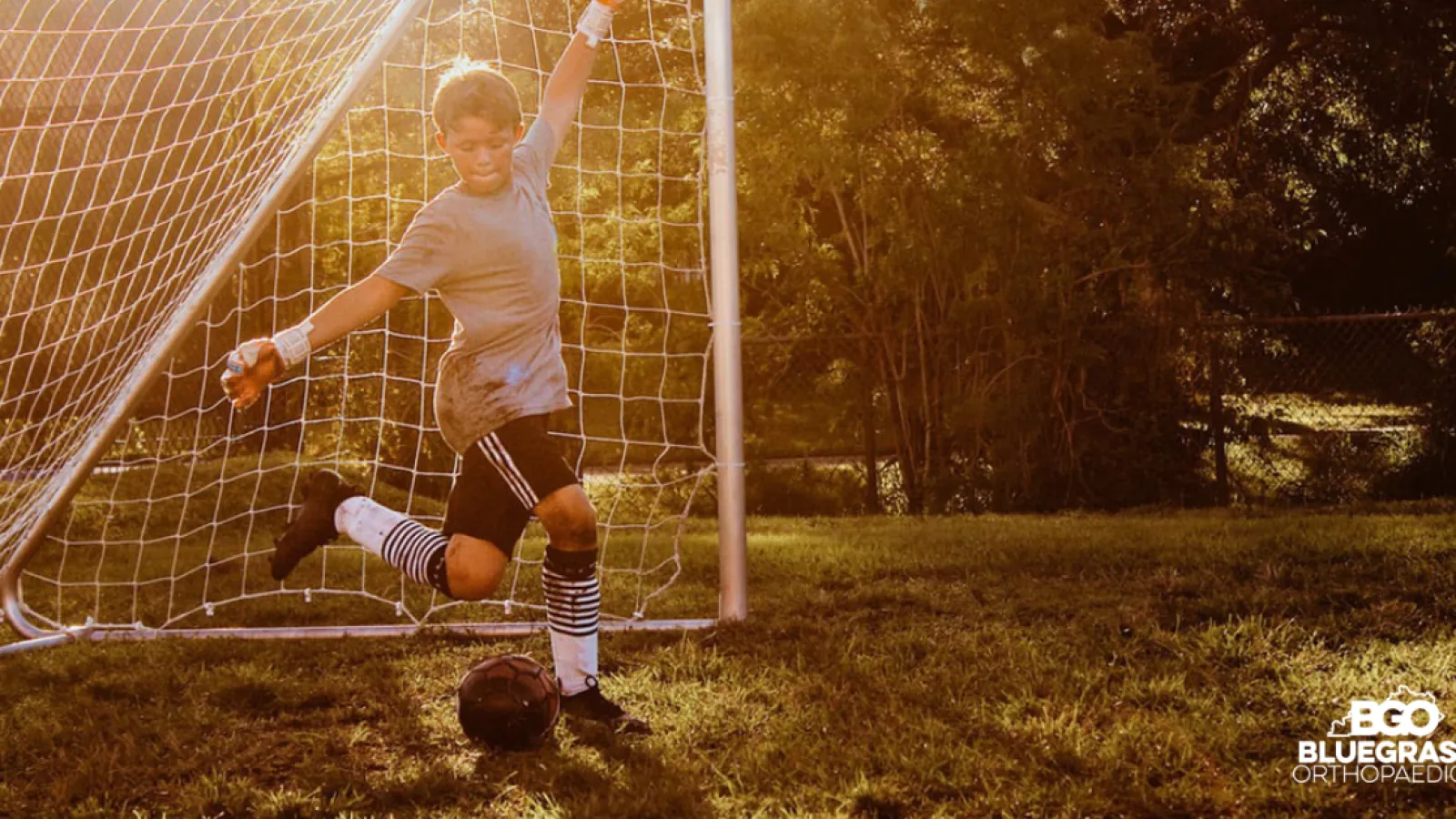The desire to push our young athletes to accomplish more is strong. In our current athletic environment, a high emphasis is put on how much our young people play, and how much exposure they get to potential college recruiters. However, we can not let this outweigh the safety and health of the athletes themselves. Did you know that nearly half of all injuries seen in athletes aged 6-18 are overuse injuries? Overuse injuries are the result of training errors, improper technique, excessive sports training, inadequate rest, muscle weakness and imbalances, and early specialization - all of which are easily preventable factors. While not as dramatic and scary as big injuries like ACL tears, overuse injuries can have lasting effects. A young athlete with nagging, overuse, injuries, can result in loss of playing time, decreased performance, and if left unaddressed, can even result in psychological exhaustion and eventual burnout.
Most overuse injuries can appear in the form of general stress, inflammation, and tendinitis. These sorts of ailments tend to be gradual, resulting in athletes going undiagnosed and untreated for long periods of time. This can especially be true in high-level players who do not want to miss any playing time. Overuse injuries can occur both at the beginning of the season when there is too much activity, too quickly, and during the later part of the season, where we typically see injuries resulting from the wear and tear of repetitive activities over the course of several months.
Although there are no recommended thresholds for specific sports or age ranges, data suggests limiting vigorous physical activity to 16-20 hours per week for young athletes. Other recommendations include ensuring young athletes takes time off from one sport for 2-3 months each year to focus on cross training and strength training. This is also a psychological break that can help the athlete avoid burnout.
Another easy way to prevent overuse injury is to avoid specialization and repetitive sport activity at a young age. Athletes who participate in a variety of sports tend to have fewer injuries and play longer. It is easy to get laser-focused on a single sport, but did you know that playing other sports, while decreasing overuse injuries and burnout, can also make you better at your primary sport? World Cup Soccer star, Abby Wambach, was one of the best women's players during this past year's World Cup - especially her heading skills. Abby remembers, "Playing basketball had a significant impact on the way I play the game of soccer. I am a taller player in soccer, in basketball I was a power forward and I would go up and rebound the ball. So learning the timing of your jump, learning the trajectory of the ball coming off the rim, all those things play a massive role." Even if it's not your favorite sport, spreading your time among other sports can have a mental benefit as well. Abby Wambach says, "Having the ability to play basketball for a bit throughout the year gave me the chance to crave soccer - to miss it."
While taking time away from your primary sport may be hard, and the belief that more practice and exposure time will make you a stronger player, taking the time to properly prevent overuse injuries can ultimately keep you out of the doctor's office and playing at your fullest for longer.

--------------------------------
About the author:

